
or

India’s Quest for equitable access to medicines and the need to provide adequate Incentives to Researchers and Entrepreneurs, understanding the debate and its various facets
The developments in the Pharmaceutical Patents sphere in recent past is akin to a war by Constitutional means, wherein all the stakeholders with their respective positions are leaving no stone unturned to win it in their favour. For those who are not aware or are partly aware of this debate over Pharma patents, let me first recount the events: Novartis Case which challenges the legal and Constitutional validity of the Section 3 (d) of the Indian Patents Act, 1970, is in the last stages of hearing before the Hon’ble Supreme Court of India ; the Bayer v. Natco dispute over grant of compulsory license to Natco of Bayer’s cancer drug on 12.03.2012; the Delhi High Court’s Judgment in Roche v. Cipla on 07.09.2012 whereby Roche’s patent infringement suit was dismissed; and 2.11.2012 ruling of India’s Intellectual Property Appellate Board (IPAB) which has invalidated the patent granted to Roche for its Hepatitis-C drug Pegasys, on an appeal filed by health group Sankalp Rehabilitation Trust against the validity of the patent.
Amidst all these developments when one delves a bit deeper, be it Issue of Generics, Ever-Greening or granting Compulsory licencing it all boils down to a divide between two very fundamental positions i.e. How to ensure equitable access to medicines and what is the sufficient incentive to research, Innovate and. The importance of the right to access to medicines at an affordable price is an essential prerequisite for a healthy society especially in a developing country likeIndia. And this right must be protected, safeguarded and nurtured for the greater common good. But having said that, it must also not be forgotten that the advancement of science and technology in curative and preventive spheres of life sciences needs to be equally protected, preserved and nurtured. This is sought to be done by creating a favourable legal regime whereby entrepreneurship and innovation is promoted through incentives like patent protection etc. No body can deny that innovation has its own pains and costs in terms of time, money and intellect which in itself is a very painstaking process and calls for lot of entrepreneurial skill to take it from laboratory to market, not just domestic but international market as well. And it should be understood that in the Patent Wars role of Judiciary is limited as Judiciary will decide according to what the law is, as policy formulation primarily is not its assigned role in the Constitutional scheme of things, and in this debate the other stakeholders i.e. the policy makers, the civil society and the consumers have a much larger stake in this overall debate.
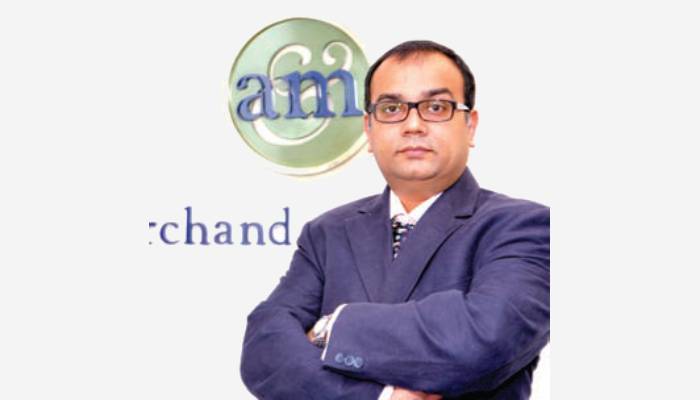
India has already become a hub for the manufacture of cost-effective generic drugs due to increased demand from local population and low production costs. Despite the sentiment that India still has some way to go on account of its laws, regulations and implementation, a number of overseas originators have accessed, and some others are keen on accessing, Indian talent.
It may be too early to say that the adopted system does not serve. The Controllers and Examiners at the Patent Office are technically qualified and they handle patent applications in areas of their technical expertise.
In order to get to the root of the controversial debate, Lex Witness interviewed Dr. Ananda Mohan Chakrabarty, the father of life patents, and is credited with revolutionising the American biotechnology industry, by not only genetically engineering a Pseudomonas bacteria but also successfully getting it patented and also called upon the experts in the legal domain, and invited their views on the same set of questions to get to the pulse of the legal intelligentsia, it included Dev Robinson & Nitin Masilamani (Partner, New Delhi) from Amarchand & Mangaldas& Suresh A. Shroff& Co. (“Amarchand”); Debolina Partap from Wockhardt, Mumbai; (“Wockhardt”) and Salman Waris from HSA Advocates, Delhi (“HSA”). The questions in the debate and the views thereon are produced hereinbelow as expressed, without being edited, i.e. absolutely unadulterated:
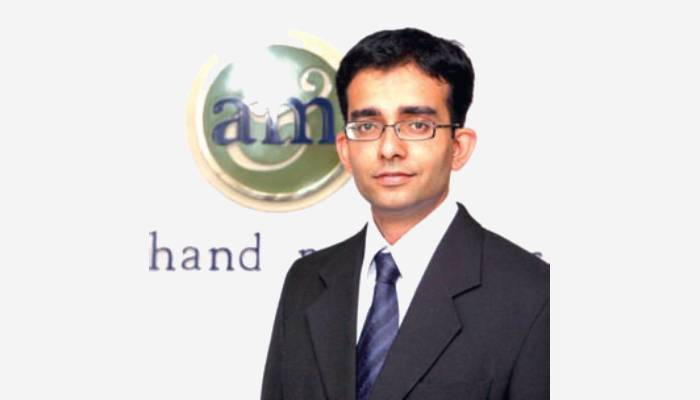
I do not believe that any system can be made leak-proof. We already do have a good system in place. Abuse is always possible. Often it is not so much a question of abuse as it is of belief by an originator that he has a patentable invention at hand. To check any abuse, the law provides a preclusion to ensure that only those new forms of existing molecules obtain patent protection that show enhanced efficacy.
The ‘golden mean’ has been provided in our patent law, and it is sound. While deciding whether or not to grant a compulsory license, the Controller is required to balance remuneration due to a patent holder taking into account the nature of the invention, expenditure incurred in developing it and reasonable profit, and balance it with affordability of the drug.
The debate between the need to ensure proper access to medicines, especially of the life-saving variety, and maintaining a balance to ensure that enough monetary incentive is provided for R&D, has been long-standing. Regulatory patent regimes globally agree on the basic principle that patents should be looked at from the lens ofpublic health and safety and the same is reflected in the laws developed by various countries.
The ‘golden mean’ has been provided in our patent law, and it is sound. While deciding whether or not to grant a compulsory license, the Controller is required to balance remuneration due to a patent holder taking into account the nature of the invention, expenditure incurred in developing it and reasonable profit, and balance it with affordability of the drug. A fair balance may be found in any case if contentions of both parties are examined in depth.
There may be situations in which cost of a medicine may still be high as the cost of R&D was high. In such situations, access to medicine should be afforded through other public/government channels. As an economy we cannot be seen to be passing on such burden to a private party (the patent holder) by not reserving for it the cost of development including often, a heavy time and resource commitment.
It is now a decade since the World Trade Organization adopted the “Declaration on the TRIPS Agreement and Public Health” at its 4th Ministerial Conference in Doha. Many anticipated that these actions would lead nations to claim compulsory licenses (CLs) for pharmaceutical products with greater regularity. A CL is the use of a patented innovation that has been licensed by a state without the permission of the patent title holder. Skeptics doubted that many CLs would occur, given political pressure against CL activity and continued health system weakness in poor countries. The subsequent decade has seen little systematic assessment of the Doha Declaration’s impact. However, India amidst so much political uncertainty never remains behind for growth, progress, human compassion and helping the poor and the needy. It is very encouraging for the Indian drug makers and also the public in India at large to benefit from such legislations. Other developing countries should take clue from this. Therefore, to my mind, a healthy matrix of appropriate price fixation, encouraging drug policy for research enhancement and compulsory licensing regime could achieve the correct regulatory golden mean.
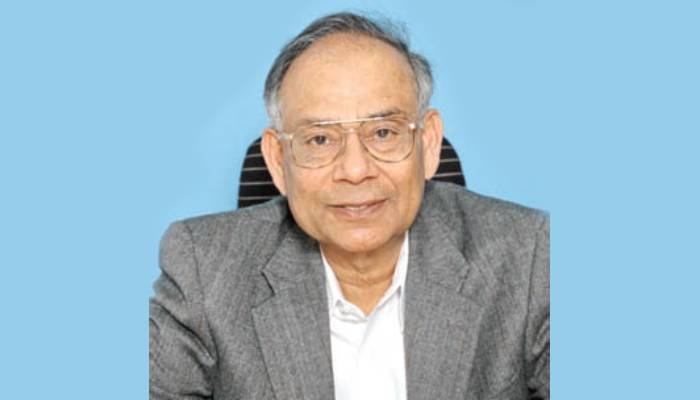
Lex Witness in the wake of the string of patent litigation involving MNCs, Indian Patent Regulator and Indian Companies, met Dr. Ananda Mohan Chakrabarty, and sought his views on the controversy. He is an eminent scientist of Indian origin, who is considered the father of life patents, and is credited with sparking the American biotechnology industry, by not only genetically engineering a Pseudomonas bacteria but also successfully got it patented after a long legal battle and winning the case in his favour from US Supreme Court. Dr. Chakrabarty spoke with much passion and concern and from a very deep and far reaching perspective on the controversy, as he viewed the controversy as a very critical link between India’s outlook on very important aspects of public welfare, economic and technological progress and the ways to achieve it through appropriate modes of law and governance.
You (India) can choose to remain poor, because that is what you choose to do, you in real terms do not allow your scientists to innovate despite there being a lot of funding from Govt. As a very critical aspect is missing there i.e. the encouragement and Incentive to Research, it is the economic progress of the west that has fuelled their technological advancement and vice versa and it’s a symbiotic relationship. Unless there is incentive, no action can be inspired. And if India is also desirous of economic progress and technological advancement, then it will also have to understand and appreciate, the symbiotic bond between the two, as that symbiotic bond needs to be nurtured. And today in India this symbiotic bond is missing or at best is a very weak link. For example, see, I am a 74 years old man, had I been in India, I would have been made to retire long back. But in US the culture is different I still teach at the university of Illinois, Chicago, whilebeing in the employment I was able to set up two companies CDG Therapeutics, which has secured has 12 US patents and more than 25 international patents (PCT). and is investigating the value of bacteria as an agent to fight cancer (including brain tumours), malaria, and even the Human immunodeficiency Virus (HIV), and Amrita Therapeutics, in India which has been established to examine an even broader range of therapeutic uses for bacteria. India has so many bright people but they languish here as there is no encouragement to entrepreneurship and incentive to research. But the moment they move to west they do it so well. It’s the cultural mindset which is responsible. And the key is to create enabling structures institutional, legal and financial. Inspire your scientists to innovate and create wealth from your inventions for the global market and pay your fair share (tax) to the Government.
Let entrepreneur innovate; take innovation which must be substantial, to the global market; Earn profits; make him Pay taxes; create safety net for citizens from taxes, especially the needy ones. And then only in true spirit you will be able to reap the true benefits of free enterprise and through its profits you will very easily be able to achieve your socialist objectives i.e. the greater common good, because penury will beget you penury only and nothing else. As it is amply demonstrated by now that India remained Socialist in spirit for good 40 years and had to opt finally for market economy as the only solution, and the fruits thereof are there for everybody to see.
Don’t let your regulators decide on the issue because first of all they may not be technically equipped to determine whether there is incremental improvement in a drug’s efficacy or not, as that can be decided by qualified medical professionals and not legal experts. Secondly and more importantly, why unnecessarily allow law to intervene, if a drug is not truly good and effective the consumer himself would not buy it let alone buying it at such exorbitant cost. Besides it is a very unfortunate situation where healthy people are deciding which drugs sick people can and cannot have.
It’s a very good thing to keep the high priced drugs in check. But again the key is that it should also not be overdone as it will also become counterproductive as and when Indian entrepreneurs would bring their drugs to the global market, other countries can use the same charges of overpriced Indian made drugs.
We cannot set a bench mark in the present post modern socio economic scenario. Both the need to ensure equitable access to medicines and the need to provide sufficient incentive are equally importantfor growth and development of a nation and fair justice of social and intellectual abilities of a mankind. The correct ‘regulatory golden mean’ would have to be decided on a cases to case basis and dependent on several variables like to jurisdiction, the development scenario of the country, its socio-political scenario, need of the hour etc.
However, it is imperative that unfair competition and exorbitant pricing should be controlled. As such the Grant of Patentsin the field of medicines should be slightly more stringent and conditional with reasonable controls placed on exaggerated market pricing, considering the fact that effective period of monopolistic right is itself an incentive to the researchers. Such a fair or reasonable price control should be put in place and regulated by the Government.
The provision of compulsory license is available to deal with such cases and the Government can use the various provisions provided under the Section 47 (1) (2) and 92 of the Patent Act on a case to case basis. More and more grant of such reasonable compulsory licenses will automatically set the golden mean between the two conflicting needs.
We do not believe that any system can be made leak-proof. We already do have a good system in place. Abuse is always possible. Often it is not so much a question of abuse as it is of belief by an originator that he has a patentable invention at hand. To check any abuse, the law provides a preclusion to ensure that only those new forms of existing molecules obtain patent protection that show enhanced efficacy. So, all increments and improvements to a product are not (and should not) be viewed as efforts to ever-green. It is still very early in our product patent regime to say that it requires further reform. The system seems to have held well in the few litigations we have had on the issue.
In 2005, India took a proactive step and amended the Indian Patent Act to introduce, inter alia, to curb ever greening practices by statutorily prohibiting these practices.Section 3(d) of India’s Patent Act states that the following are not inventions:
“The mere discovery of a new form of a known substance which does not result in the enhancement of the known efficacy of that substance or the mere discovery of anynew property or new use for a known substance or of the mere use of a known process results in a new product or employs at least one reactant. Explanation – For the purpose of this clause, salts, esters, polymorphs, metabolites, pure form, particle size, isomers, and mixture of isomers, complexes, combinations and other derivatives of known substances shall be considered to be same substance, unless they differ significantly in properties with regard to efficacy.”
The patent ever greening promotes development of unfair means of competition. Enhanced intellectual property scrutiny and strong penal measures under the Competition Act may remove the roadblock for generic drugs and thereby provide the masses with cost effective medicines. This will be required to bring balance between inventions and affordability. The European Commission has had some landmark judgments in this space.
Ever-Greening and other such manipulative instruments employed by Pharma companies to get around the Regulatory Regime can be controlled/blocked by strong vigilance on the part of public at large, the legal community, the industry and patent office. Pre-Grant/ Post Grant oppositions filed should be disposed off in timely manner to encourage such proactive vigilance. Searching and granting of such patents should be stringent and assistance of industry experts should be availed in such cases.
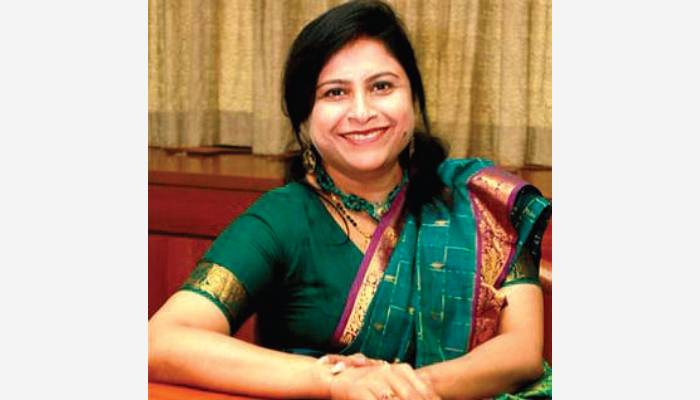
The next frontier is original drug development and outsourced R&D. Discovery costs could be one-tenth of what drugmakers pay in Europe or the US. Indian Companies are also making big headways for biologics toll and or contract manufacturing given the cost effective manufacturing space.
The Competition Commission of India as well as the NPPA should have a coordinated approach to arrest predatory pricing and ever greening tactics that may be adopted.
Enhanced intellectual property scrutiny and strong penal measures under the Competition Act may remove the roadblock for generic drugs.
To my mind, a healthy matrix of appropriate price fixation, encouraging drug policy for research enhancement and compulsory licensing regime could achieve the correct regulatory golden mean.
Once again, it may be too early to say that the adopted system does not serve. The Controllers and Examiners at the Patent Office are technically qualified and they handle patent applications in areas of their technical expertise. At the appellate stage, the composition of the Intellectual Property Appellate Board is a judicial member and a technical member. Moreover, the Act provides that a court, in its wisdom, may appoint an independent scientific adviser to assist it.
Moreover, the interested stakeholders – applicants, opponents or parties to the suit, most often have high levels of technical expertise at their disposal. Weighing contentions on both parts does not put so heavy an onus as would require a reform. Many patent-advanced jurisdictions of the world have similar systems. What we could do with is speedier disposal. Advances have been made, and the Supreme Court has directed courts to recognize short shelf-life of technologies and limited term rights in patents.
The Competition Commission of India as well as the NPPA should have a coordinated approach to arrest predatory pricing and ever greening tactics that may be adopted by pharma companies.
Currently in India the Patent office as well as a majority of the legal fraternity is not technically well equipped to decide such issues and as such may not always be in the best position to decide on EverGreening issue. However, help of technical experts having industry specific knowledge and expertise should be taken. The law provides for recruitment of Scientific Advisers. It should be mandatory for patentoffice to take assistance from ‘subject matter experts’ or field specific Scientific Advisers in case of such issues.
India has already become a hub for the manufacture of cost-effective generic drugs due to increased demand from local population and low production costs. Despite the sentiment that India still has some way to go on account of its laws, regulations and implementation, a number of overseas originators have accessed, and some others are keen on accessing, Indian talent.
In addition to patent law, there are other significant factors that would determine whether India becomes an origination point for new drugs. The patent law as it presently stands cannot be said to be detrimental to originator interests though there are some areas in which it could be revisited. More relevant to becoming a hub of reckon is the speed with which matters are settled before tribunals and courts. Strong legally sound jurisprudence needs to be developed. Presently, the law on confidential information and trade-secrets, principles of determining infringement, of holding a patent bad, and of awarding costs and damages require to be developed boldly to secure an originator’s investment. With the already available large talent pool, advances along the mentioned lines should hugely encourage flow of capital and know-how of drug development.
Costs are lower, and because of the country’s history in pharma manufacturing, workers are well educated and highly skilled in India. Plus, Indian drugmakers have experience dealing with FDA, NPPA and other Western regulators and despite some high-profile quality problems, India still has a better reputation for quality control than China. Though I must say China is catching up. Lots of the work drugmakers do between R&D and marketing will end up in India. The next frontier is original drug development and outsourced R&D. Discovery costs could be one-tenth of what drugmakers pay in Europe or the US. Indian Companies are also making big headways for biologics toll and or contract manufacturing given the cost effective manufacturing space.
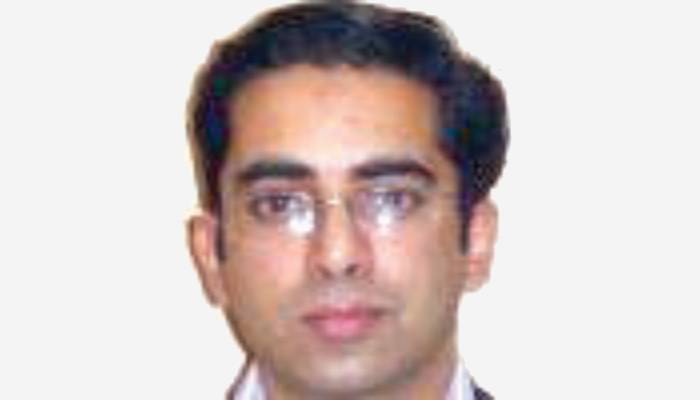
The regulatory regime in India is not good enough to convert the country into a global hub of Research and Development in the Pharma Sector.
Currently in India the Patent office as well as a majority of the legal fraternity is not technically well equipped to decide such issues.
Ever-Greening can be controlled/ blocked by strong vigilance on the part of public at large, the legal community, the industry and patent office.
The correct ‘regulatory golden mean’ would have to be decided on a cases to case basis and dependent on several variables.
In current scenario, the regulatory regime in India is not good enough to convert the country into a global hub of Research and Development in the Pharma Sector. There are lots of political, administrative, economic and legal constraints plague the sector and the country at large. A total overhaul of the regulatory regime would be required to achieve the same and we could learn a lot in this regard from other countries in the region like Israel, where the ‘Research and Development’ in the Pharma Sector has contributes substantially to the overall growth and development of the country and the society at large.
So in conclusion it can be said that the variety of opinions on the same questions state the matter of the fact that the golden mean in the controversy is not easy to find but as we know the churning produces the distilled wisdom, which can be used for decades to come to strengthen and create a market friendly and citizen caring legal system in India.
The LW Bureau is a seasoned mix of legal correspondents, authors and analysts who bring together a very well researched set of articles for your mighty readership. These articles are not necessarily the views of the Bureau itself but prove to be thought provoking and lead to discussions amongst all of us. Have an interesting read through.

Lex Witness Bureau

Lex Witness Bureau

Lex Witness Bureau

For over 10 years, since its inception in 2009 as a monthly, Lex Witness has become India’s most credible platform for the legal luminaries to opine, comment and share their views. more...
Connect Us:


The Grand Masters - A Corporate Counsel Legal Best Practices Summit Series
www.grandmasters.in | 8 Years & Counting
The Real Estate & Construction Legal Summit
www.rcls.in | 8 Years & Counting
The Information Technology Legal Summit
www.itlegalsummit.com | 8 Years & Counting
The Banking & Finance Legal Summit
www.bfls.in | 8 Years & Counting
The Media, Advertising and Entertainment Legal Summit
www.maels.in | 8 Years & Counting
The Pharma Legal & Compliance Summit
www.plcs.co.in | 8 Years & Counting
We at Lex Witness strategically assist firms in reaching out to the relevant audience sets through various knowledge sharing initiatives. Here are some more info decks for you to know us better.
Copyright © 2020 Lex Witness - India's 1st Magazine on Legal & Corporate Affairs Rights of Admission Reserved